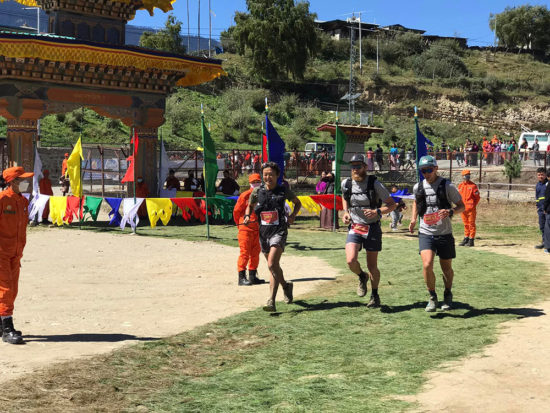Thinley Namgay
For the 20 world-class international runners during the Snowman Race, there was one common problem. The lack of time to acclimatise to the place affected their performance.
Only eight of them completed the race.
The international runners from 10 countries were distance runners, ultra-marathon racers and trail runners, among others. Of the 12 international runners who were out of the race, seven voluntarily withdrew and five suffered from acute mountain sickness.
Five of them couldn’t proceed from Narithang (the first aid station) and one could run only a few kilometres from Narithang. One of them withdrew on the first day before reaching Narithang.
Many athletes said the duration was long and the elevation high in the case of the Snowman Race. Most of the foreigners couldn’t cope in high-altitude places.

Only eight international runners completed the race
Nine Bhutanese acclimatised for a week in Laya and also had more than two months of training in Thimphu.
Bhutan selected the best athletes: five men from the armed forces and four women – two from the Royal Bhutan Army, a villager and a tourist guide participated. Bhutanese runners were between 23 and 39 years. International runners were aged between 34 and 50.
Meghan Hicks, 44, from the USA completed the race. She said the journey was beautiful and challenging. She said the real race in the Snowman Race began on a single-track trail towards Laya, where the trail was muddy and rocky, and one could feel the high altitude.
Meghan said that she felt the high Himalayas, where it transitioned from forest to mountains, to glaciers. She said it was difficult to drink, eat and sleep towards evening.
She said the race towards Gophula on the third day, which is located at 5,470 metres above sea level (masl), was the most difficult. “I have been to such high altitude before but only as a walker.”
Wataru Iino, 42, from Japan, said that it would be challenging for Japanese runners in the Himalayas if they haven’t trained well. “After three days into the race, it was difficult for me to breathe. I became restless.”
Wataru said the total distance of the race was not very clear in some areas which affected his motivation.
He said the distance as per the organiser was 43km from Lhedi to Geche Wom on day three but it was 5km longer. “When I reached that 43km place, there was no aid station. This should not happen.”
Wataru said that future international runners should train well before coming for the race. Wataru practised for 15 days in the low-oxygen gym before coming to Bhutan. However, he said it was not enough. “I should have done it at least for two months.”
Sarah Keyes, 37, from the USA said, “I have trained as an ultra-marathon runner most of the year. I have been competing for eight years.”
However, she said that the place she lives in is only 300masl. “Before coming to Bhutan, I went to Colorado which has more mountains to acclimatise.”
Sarah said she was disappointed as she expected to complete the race. She said she wants to acclimate more and come back for the next Snowman Race.
Matthias Kastner from Switzerland said he did less training at high altitudes. “On the weekends, I used to go to the mountains which are about 3,000masl. I underestimated this race.”


